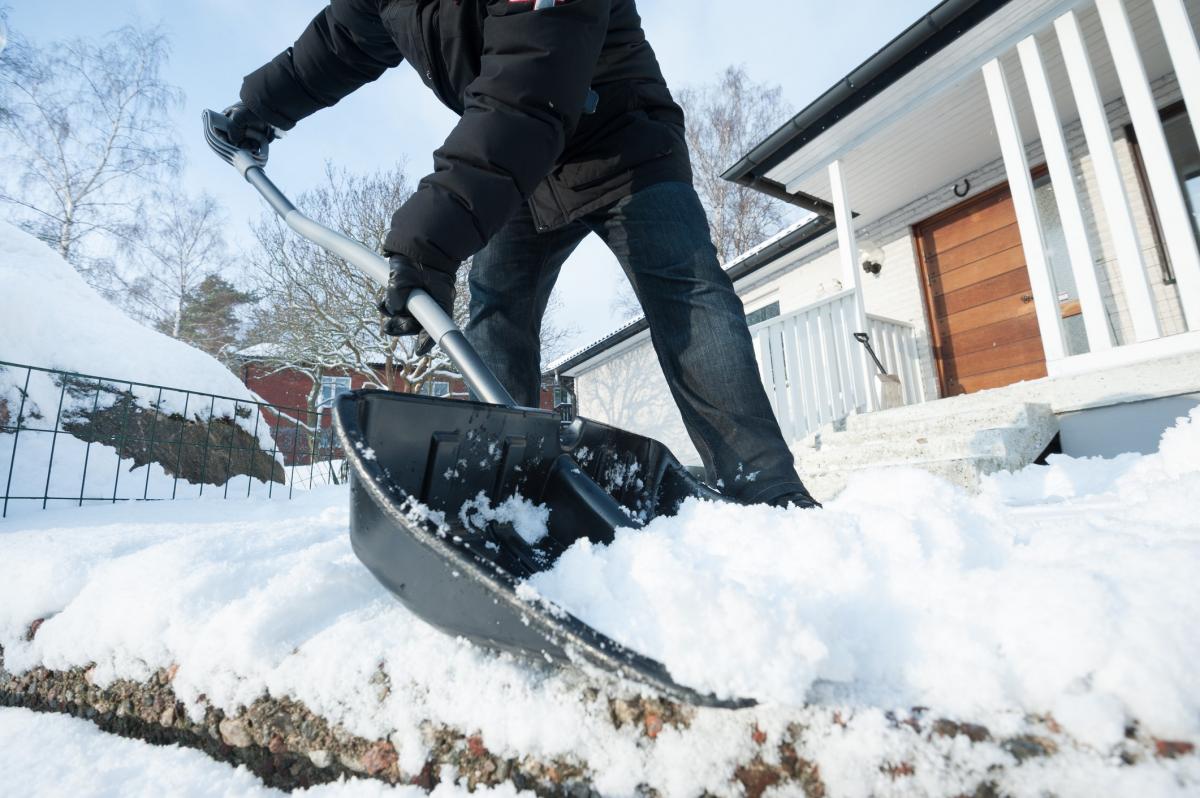How to avoid back injuries from snow shoveling

Winter weather brings on conditions ripe for injuring one’s back. Many people underestimate the physical exercise required to clear a modest amount of snow, especially if the snow is heavy and wet. Snow shoveling is hard work. A clear sidewalk and driveway may be important, but the health of your back is too.
Let us help you get to the bottom of acute or chronic back pain. Call 800.922.0000 to schedule an appointment with one of our neurosurgeons.
Injuries from falling on ice and muscle sprains are very common during the winter season. Impacts directly on the back or landing on the tailbone can result in fractures. Use the following tips to help you avoid injury and pain during the snowy winter season.
Warm Up Your Muscles

Cold, tight muscles are more prone to injury than warm, flexible muscles. Before bundling up and heading out to shovel, warm up your muscles with gentle stretching. Ideally, the best warm-up technique involves maintaining muscular strength with frequent exercise. Using back conditioning exercises on a regular basis may prevent muscle strain re-injury for those with previous back issues.
Practice Smart Shoveling Techniques
To prevent potential back pain and injury, watch your technique. It’s tempting to simply want the job done quickly and forget about good form. Besides sturdy footwear with good tread and protective clothing, I recommend these snow shoveling tips:
- Lift small scoops of snow, especially if snow is heavy
- Try pushing the snow instead of lifting it
- Avoid arching your back and bending forward
- Bend your knees and keep your back straight
- Take frequent breaks
- Avoid aggressive twisting action by pivoting your whole body to face new direction
- Do not throw snow over your shoulder
- Walk to deposit snow instead of reaching and tossing
If You Think You Have Suffered an Injury
If you’ve had chronic back pain or prior back issues, you are at higher risk of re-injury and may need to avoid shoveling altogether. If you are experiencing new soreness, simple conservative measures can help alleviate symptoms in many cases. These include rest, heat or ice, and over-the-counter non-steroidal anti-inflammatories, such as acetaminophen or ibuprofen.
If you are experiencing persistent pain, you will need to be promptly evaluated by a physician. Older patients may be more likely to sustain injuries from falls or snow shoveling and need to be carefully examined.
Symptoms to Watch for:
- Low back pain persisting for more than a few weeks
- Pain not responding to conservative management at home
- Severe pain that seems beyond what would be expected from a muscle sprain
- Pain radiating down either extremity
- New weakness
A typical exam for back pain would involve examining the painful area and determining the functional limitations from the pain. X-rays or MRI imaging studies may be recommended based on the circumstances of the pain and any concerning findings.
Snowy winter weather can cause common back, shoulder and other muscle injury risks. At Nebraska Medicine, we want to be sure you stay healthy no matter what the weather.




